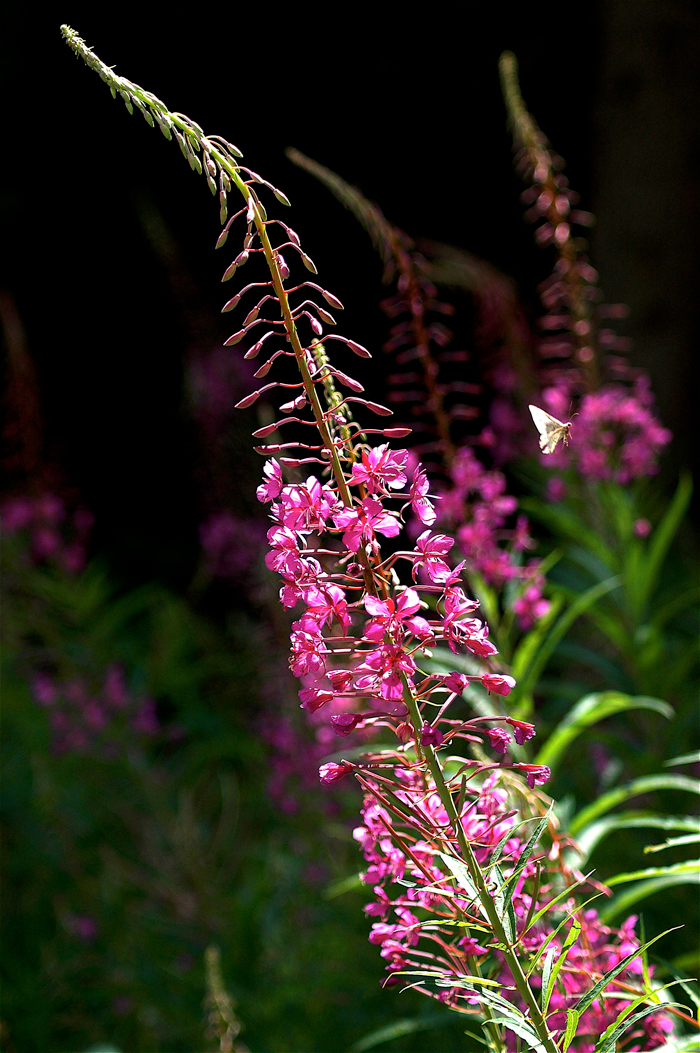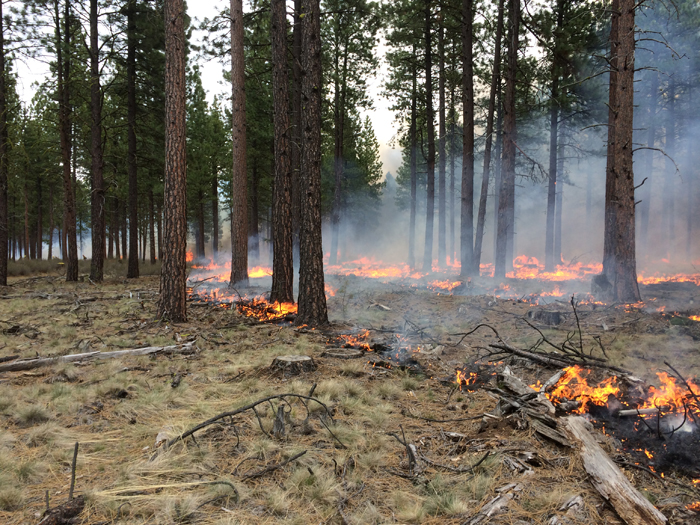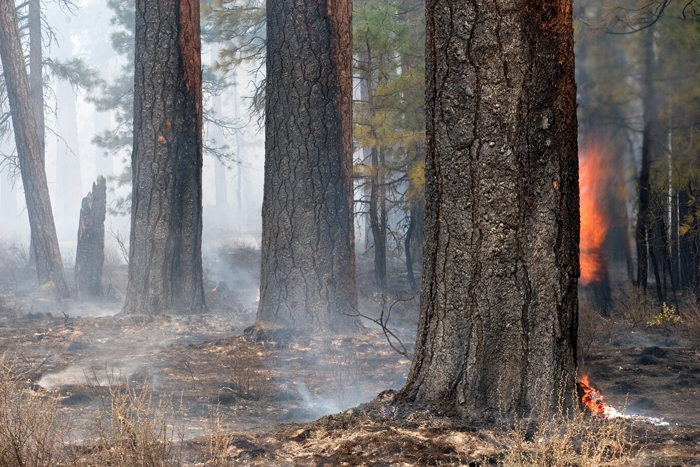Forest fires can be a threat to homes and property, but they also play an important role in restoring and maintaining a healthy forest. Central Oregonians are in the midst of a potentially long fire season, and here are some points to consider when evaluating fire in our ecosystem.
 Fire isn’t necessarily a bad thing. Dry Ponderosa Pine forests actually need fire to control undergrowth and reduce competition for water and nutrients. By reducing undergrowth, wildfires create openings in the forest, which enable diverse vegetation growth and snags that many animals utilize for food and shelter.
Fire isn’t necessarily a bad thing. Dry Ponderosa Pine forests actually need fire to control undergrowth and reduce competition for water and nutrients. By reducing undergrowth, wildfires create openings in the forest, which enable diverse vegetation growth and snags that many animals utilize for food and shelter.
- After a logging project, the re-planting process creates dense stands of young trees. This, coupled with suppression of natural fires has created a build-up of fuel and unnaturally flammable conditions in our forests. Older trees, with their thick bark and tall trunks, are much more fire-resistant than smaller, younger trees with thin bark and canopies close to the ground.
- Many forests need restoration. Logging and fire suppression have left many forests unnaturally dense. Restoration-based thinning projects that focus on dense young stands, and seek to restore the forest to historical conditions, can be beneficial in making forests more fire resilient.
- Many conservation proposals seek to restore the forest to a historical landscape, which is naturally adept at reducing unnaturally severe fires. The Ochoco Mountains National Recreation Area would encourage restorative thinning for ecological benefit and through a balance of fuels reductions and conservation would aim to reduce the likelihood of unnaturally large wild fires.
- You can suppress fires in the Wilderness. And we do. However, Wilderness areas are by definition road-less and typically exist in rugged terrain, which makes fire suppression tactics a challenge, regardless of whether the land is designated Wilderness or not.
- Many argue that our Wilderness areas are a recipe for unnaturally severe fires, as they have been subject to fire suppression, yet have had very little restorative efforts. Wilderness areas can utilize management tools, such as prescribed fire, to get the landscape back to a more historical representation. A National Recreation Area designation can serve as an enhanced conduit for federal funding which could be used for restorative forest management projects including thinning and prescribed fire in the Ochoco Mountains.

Photos (top to bottom): Brett Cole, Steve Kingsford-Smith, and Rod Dines.
 '
'

